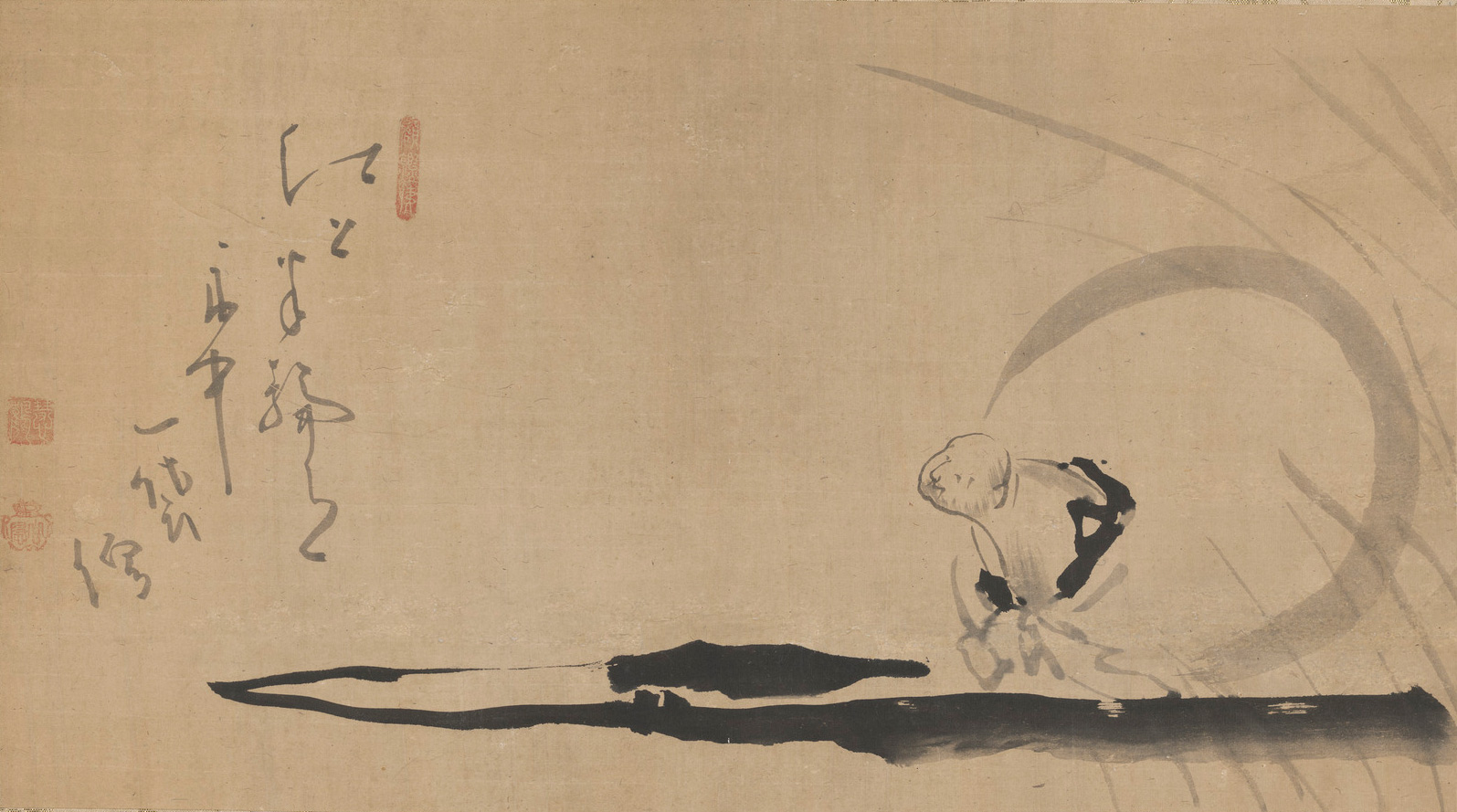When we sit down in zazen, we have a clear model: the Buddha, Shakyamuni. Faced with the problem of human suffering he rejected doctrine and turned his attention inwards until he penetrated the mystery of his own essential being, and of universal being. He did this not by reasoning and analysis but by steady, persistent, direct observation, what Zen master Josh Bartok calls “presence”: “sitting in presence to breath, sitting in presence to mind, sitting in presence to body.”
From the time of the Buddha, right up through Bodhidharma and the long subsequent line of Chinese masters in their various schools of Zen, and through the lineages that followed in Korea, Vietnam and Japan, and then throughout the Western world, this has been our essential practice. When the tradition of Meditation Buddhism (the word “Zen” means meditation) first came to China with Bodhidharma in the 5th century CE, it found the Buddhism of doctrine and scripture already established and growing, though overshadowed by the two major native traditions, Confucianism and Taoism.
The Zen tradition matured over the course of 2 centuries and 6 generations, during which there was a gradual merging of China’s native Taoism, and Bodhidharma’s Meditation Buddhism, as Taoist terms were adopted to make Meditation Buddhism more familiar and more accessible to the Chinese. The result was the Chinese Zen that we are familiar with.
When the 6th patriarch, Hui Neng, decided to choose not one, as with previous generations, but four successors, there was explosive development, and Zen Buddhism was launched into its Golden Age. Its masters practised what the Buddha had practised, honing their realization of essential nature by engaging with each other in dialogues, some resorting to physical blows as the most direct way to make their point without using words and concepts.
Stories of these encounters spread through the Chinese Zen world and became themselves subjects for contemplation, the intent being to broaden and deepen realization. So effective were they, that in time they were standardized and compiled into koan collections, typically featuring cases with verses by the master who had originally compiled the collection, and with additional instructions and/or commentary by other masters.
Thus, by the 12th century, the tradition that Bodhidharma had declared
a special transmission outside the scriptures,
not founded upon words and letters…
had developed an extensive canon of its own literature, including a number of koan collections, such as the Mumonkan and the Hekiganroku (the Blue Cliff Record), and long poems, such as the Shinjinmei. The canon was unique among religious scriptural traditions in that not one of these koans ever attempted to give doctrinal answers to religious or spiritual questions. These texts never deviated from their purpose of pointing the practitioner toward an existential answer to their spiritual questions. For this reason, they eschewed rational answers, depending rather on responses arising directly out of the experience of essential nature.
A monk asked Joshu, “What is the meaning of the Patriarch’s coming from the west?” Joshu said, “The Oak Tree in the Garden.”
An absurd answer, but from an essential point of view, obvious, and true.
Here’s another, picked at random from the Hekiganroku:
Ryu Tetsuma came to Isan. Isan said, “Old Cow, you have come.” Ryu Tetsuma said, “Tomorrow there will be a great feast at Mount Tai. Will you go, Master?” Isan lay down and stretched himself out. Ryu Tetsuma turned and left.
To explain, Ryu Tetsuma was a lay disciple of the great master Isan and lived only a short distance away from him. Like many lay followers of Zen she was highly adept, and like other elderly women who crop up from time to time in Zen lore, could hold her own in Zen exchanges with anyone. “Tetsuma”, her nickname, means “iron grindstone”, and is an indication of her formidable reputation. Isan was one of the most famous masters of ancient times, co-founder of the Igyo School of Zen, and Dharma brother to Obaku, the teacher of Rinzai.
When Isan calls Ryu Tetsuma “Old Cow” he is not being insulting. The cow, or ox, in Zen iconography is representative of enlightenment. When Isan says, “Old Cow, you have come,” it sounds like he’s saying something casual, like, “Ah, you’re here.” But in ancient China it appears that even casual encounters were treated routinely as opportunities to challenge and hone spiritual vision, and Ryu Tetsuma correctly understands Isan’s declaration in this light. “Come?” You’ve “come“? From the essential point of view, can there be anything called “coming”? Not to be drawn in, she does not answer as the casual visitor might, “Yes, it was a lovely day for a walk.” No, she in turn asks a question. “Tomorrow there will be a great feast on Mt. Tai. Will you go, Master?” Mount Tai, sacred to the bodhisattva Manjusri, was 800 kilometers away, and so the question on the face of it is absurd, but Isan recognizes that the question is really about coming and going — can there be such a thing? — and answers by lying down and stretching himself out. Seeing this, Ryu Tetsuma declares the dialogue over by simply turning and leaving.
The student must see the entire exchange from the essential point of view, which is to say from the point of view of at least one of the participants, and make a response in the dokusan room.
Once a student has gone through the entire koan curriculum – there are roughly 500 in the Sanbozen tradition — they start over once more, but the second time they are expected to give responses demonstrating understanding not just of the case, but also of the instruction and the verse, which in most instances accompany the case and are quite helpful in guiding the student to the point of the koan. In this case the verse is considered exceptional, even among the very fine verses in the rest of the Hekiganroku:
Riding on an iron horse, one enters a heavy fortress.
An imperial order has been issued, one hears that the six nations are pure.
Still holding the golden whip, one poses a question to the home-coming traveler.
In the deepest night, with whom will one walk the royal quarter?
With every line, Setchô attempts to direct the student’s attention to the essential matter:
- Tetsuma comes to Isan, prepared for “combat”.
- What is the source – who is the emperor – declaring that the six nations – the entire world – are pure?
- Who is holding the golden whip? Tetsuma, who has posed a question to Isan? Isan, who issued the first challenge of the dharma combat to Tetsuma? The Emperor, who challenges us all? You?
- Who is the home-coming traveller? Tetsuma? Isan? You? All of the above? This recalls Ram Das’s “We’re all just walking each other home.”
- This last line is a koan all by itself, and I’ll just leave you with it.

